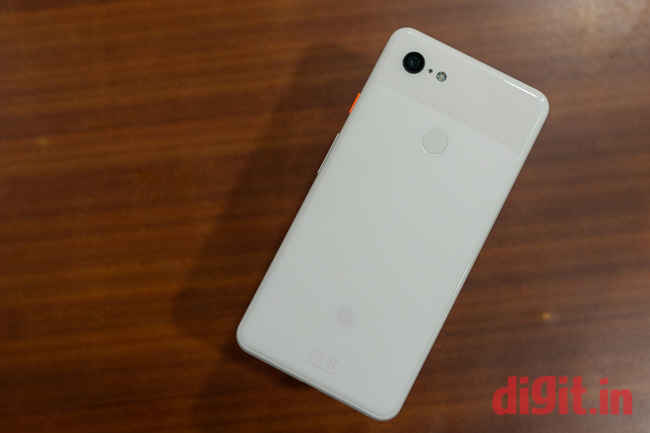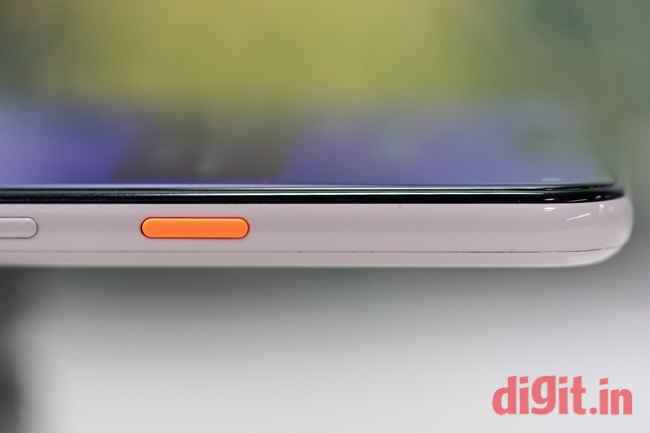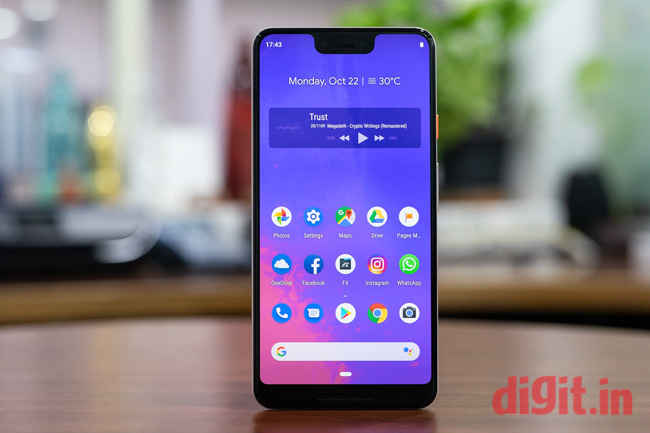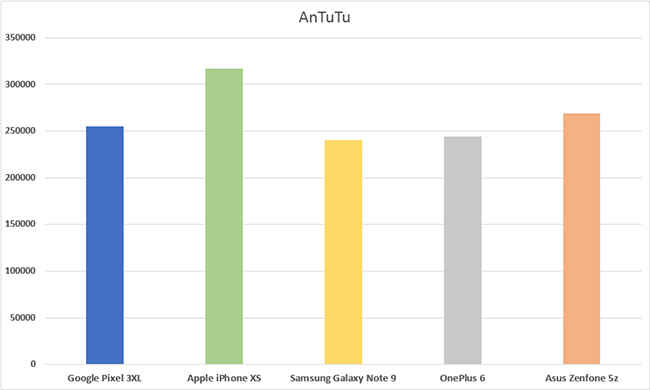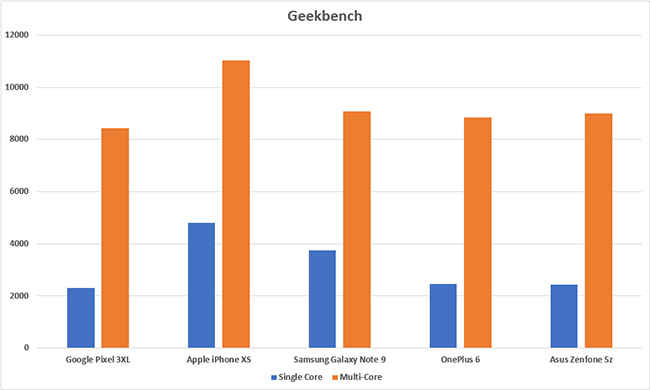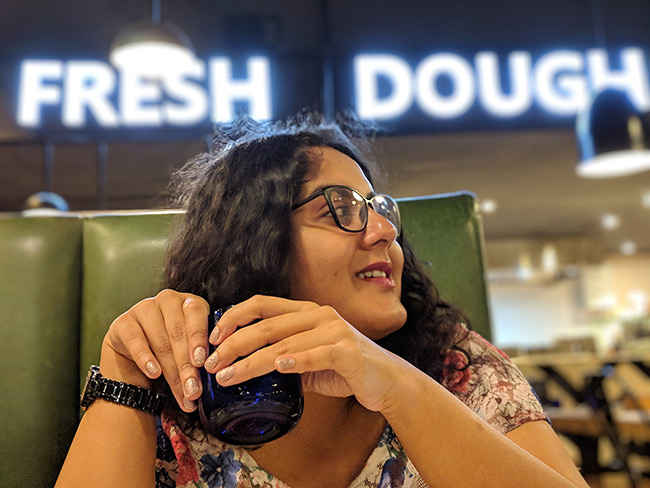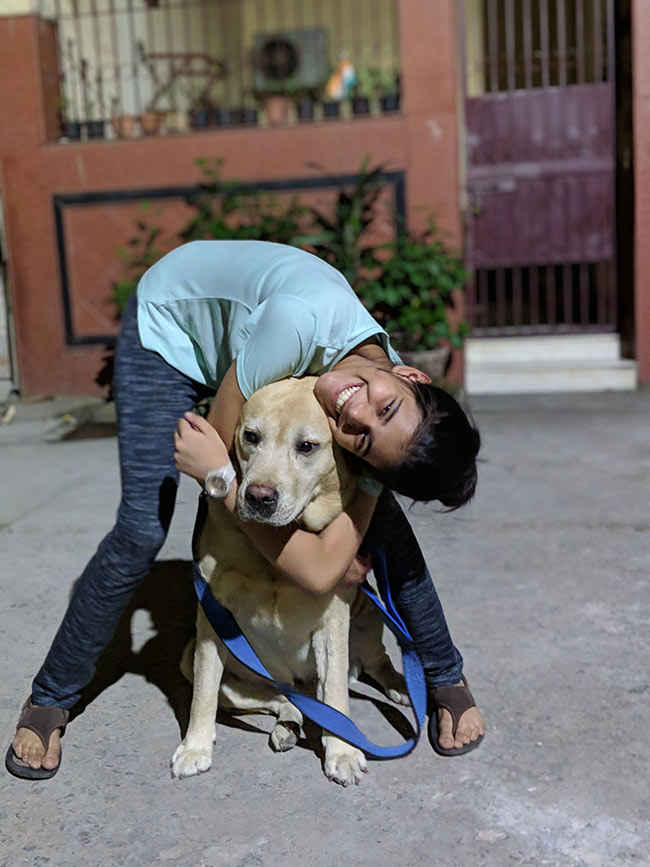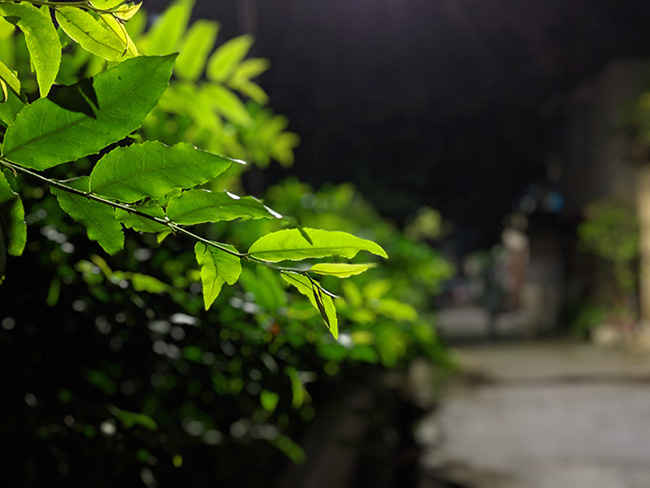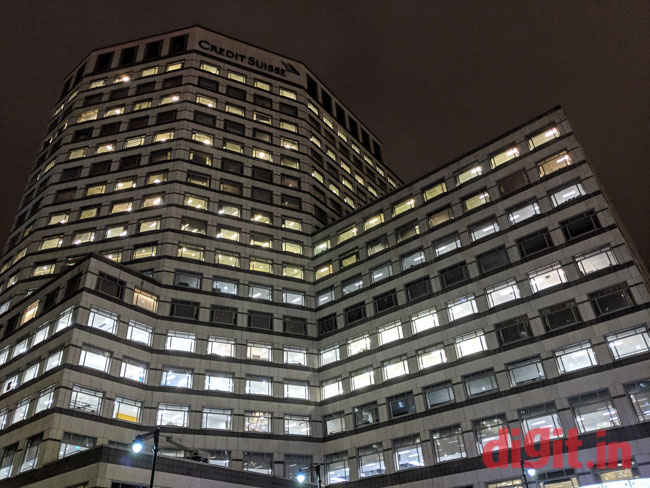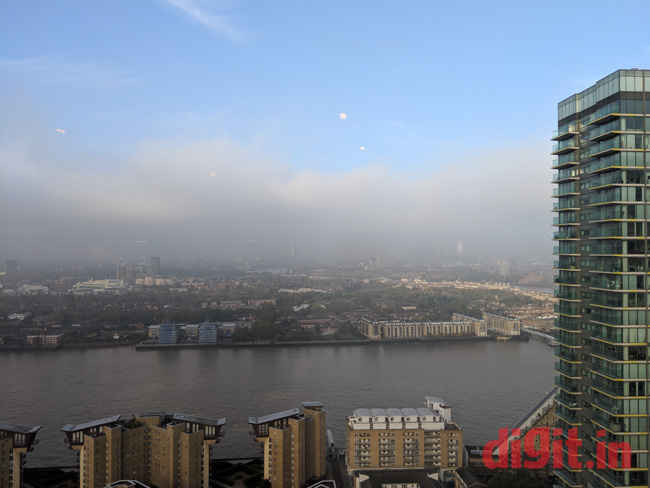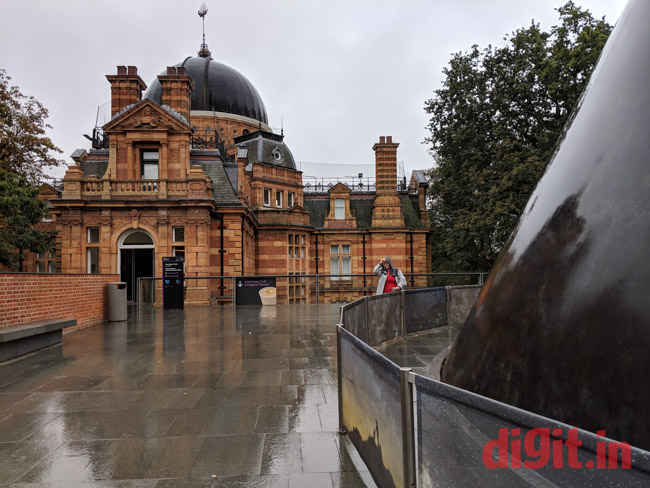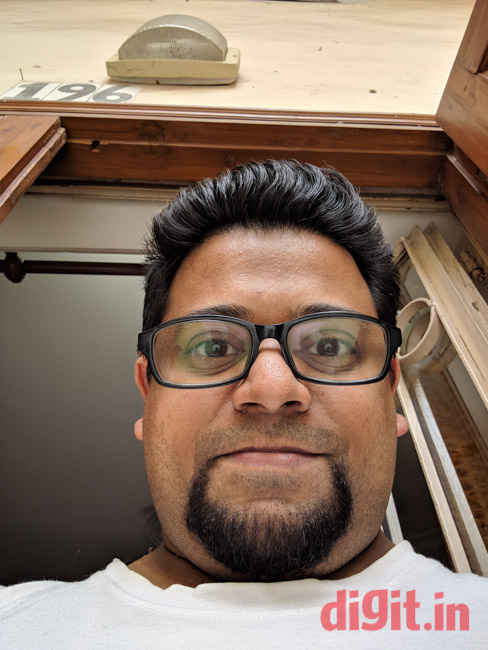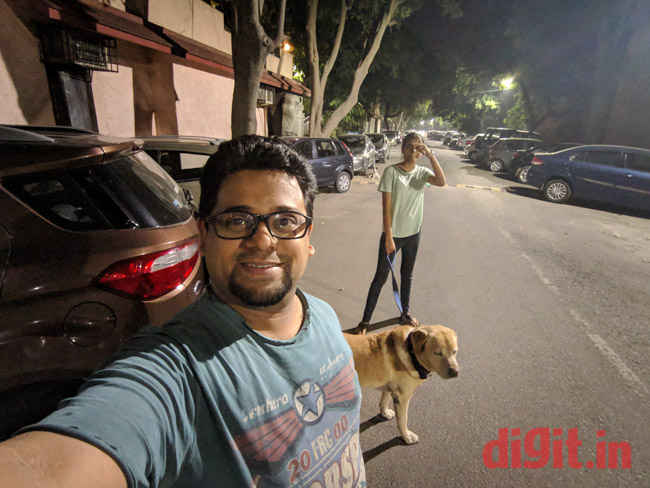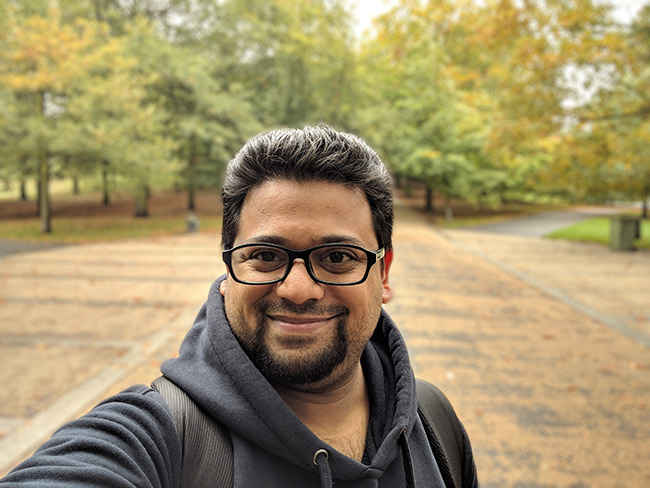Google Pixel 3 XL Review : Best camera phone meets the worst notch
The Google Pixel 3 XL continues to deliver on the promise of jaw-dropping imaging performance. The Qualcomm Snapdragon 845 paired with Android 9.0 make the Pixel 3 XL a solid performer for any and every task, regardless of how demanding it may be. However, for a smartphone priced at Rs 83,000 for the 64GB variant, the Google Pixel 3 XL feels grossly overpriced, given that it doesn't support expandable storage, doesn't sport an HDR10 compliant display and still doesn't have a secondary rear camera. The Pixel 3 XL asks a huge premium for the peace of mind that every time you take a photo, you're going to have a winner on your hands.
Build and Design
The Google Pixel 3 XL continues to borrow heavily from its predecessors in terms of design. Google’s signature dual-tone finish is present on the Pixel 3 XL as well, but this time around, the Mountain View company has resorted to some clever tricks. The back of the smartphone is all glass, but the bottom 3/4th of the back has a new textured finish, making the phone feels almost like silk. It’s a very unique feeling to the touch and one that is definitely nice. Our ‘Not Pink’ coloured variant is a beautiful soft shade of what is definitely pink. Think a pink Mentos, that’s what this phone looks like, and it’s a nice colour.
The back houses the singular camera lens along with a round fingerprint sensor. All the buttons you’d need are on the right side of the device. On top is a neon-orange power button, the bright colour being a nice touch to the otherwise muted colour tone. Below the power button sits the body-colour volume rocker. The buttons are placed on a metal frame that has a glossy finish, almost making it feel like glass. The top and left side of the frame sits completely empty, given that the SIM card slot has moved to the bottom of the phone, right next to the USB-C port. In case you’re wondering, the speaker has moved from the bottom of the phone to the bottom of the front panel. The earpiece doubles up as the second half of the stereo speaker setup, neatly nestled between two front-facing cameras. This entire assembly means that the front of the Google Pixel 3 XL is adorned with a notch, quite possibly the biggest in any smartphone yet.
The Google Pixel 3 XL offers just enough “newness” in terms of design to prevent feeling like a copy. It retains a very familiar design language which everyone, even non-Pixel users would be familiar with. The key highlights of the design are the IP68 rating, the new colour treatments and the really nice soft textured finish on the back. AS far as build and design go, the Pixel 3 XL has every making of a flagship smartphone.
Display
The Pixel 3 XL boasts of a 6.3-inch P-OLED display with a resolution of 1440×2960, pegging the pixel density at 523ppi. Interestingly, the display on the Pixel 3 XL is made by Samsung this time around and hence, one of the biggest disappointments of the Pixel 2XL get addressed. Last year, the larger of the two Pixels suffered from a horrendous colour shift problem, an issue that seems to have been mitigated this time around. OLED displays still, in general, have a colour shift from yellow to blue when the viewing angles are extreme, but for regular use, this isn’t going to be hampering your experience.
The Pixel 3 XL’s display supports the DCI-P3 wide colour gamut and is compatible with YouTube HDR, but sadly, you don’t get HDR10 or Dolby Vision as the display is made of an 8-bit panel. Netflix and Amazon Prime Videos do not show the Pixel 3 XL as a device that supports HDR video playback, which is a bummer given that all flagships at this price point offer HDR10 compliance at the least. The LG G7+ which is half the price of the Pixel offers not just HDR10 compliance, but also Dolby Vision certification.
Despite the lack of HDR10 compatibility, the Google Pixel 3 XL’s display is a gorgeous slab to view content on. With improved viewing angles (and better-controlled colour shift) watching videos streamed via any of your favourite streaming services is bound to look pleasing. The display offers three viewing modes of Natural, Boosted and Vibrant, all of which offer excellent colour reproduction. Coupled with a maximum brightness of 650 nits, you’re not going to be faced with any disappointment while using this phone, regardless of whether it is outdoors in bright light or in your bedroom at night, in pitch dark.
The display on the Google Pixel 3 XL is definitely better than most smartphones in the market today, especially those claiming to take on flagships at a cheaper price. Sure it offers a higher resolution and higher pixel density, and a fairly colour accurate display. What is lacks, however, is HDR10 capabilities, something which the Samsung Galaxy S9, the iPhone XS, iPhone XS Max and even the much cheaper LG G7+ ThinQ offer. Given that Samsung made the P-OLED display in this smartphone, it is a little surprising that Google left HDR10 off the menu. When you’re selling a flagship device at Rs 83000, every bell and whistle that’s left out counts.
Performance
Google plays the spec-game only half way with the Pixel 3 XL. You get the latest and greatest Qualcomm Snapdragon 845 processor, but only 4GB of LPDDRX RAM to go with it. Consumers who love the numbers game may seem disappointed at the lack of 6GB or 8GB of unnecessary RAM, but when you start looking at the benchmark numbers, you come to realize why Google didn’t pony up the extra cash for that extra RAM.
AnTuTu scores put the Pixel 3 XL ahead of the Samsung Galaxy Note 9 and even the OnePlus 6, but just a hair behind the Asus Zenfone 5z. Geekbench scores, however, peg the Pixel 3 XL square in between the flagships, trailing by a very small amount behind the OnePlus 6 and even the Note 9. You can see how the Pixel 3 XL compares with its competition in the graphs below.
Thankfully, benchmarks only tell a part of the story, and often they can be less than reliable. When it comes to real-world performance, I used the Pixel 3 XL for over a week as my main phone, including on a 4-day work trip that required heavy amounts of multi-media creation, editing and posting. Throughout my usage, the phone didn’t show any signs of slowing down, even when editing a batch of RAW files from a Sony A7 MarkII in Adobe Lightroom on the phone. Even gaming didn’t seem to stress the phone out, as were evidenced by my long bouts of playing Asphalt 9 and Injustice 2. The multi-tasking window on the Pixel 3 XL is smooth to scroll through and there wasn’t a single stutter.
We have reached a point in smartphone computing speeds where the difference in speed between various smartphones is not even noticeable. When you consider the Pixel 3 XL next to Samsung flagships and even the OnePlus 6, you do notice how fluid the UI on the Pixel is, but that’s a given. While Samsung smartphones have been noted to slow down after some time, the Pixel devices keep chugging on. In fact, our Pixel 2XL works just as fast as any modern-day smartphone, without any lag or stutters. While the Pixel 3 XL may not be the “benchmark destroyer,” it is a smartphone that will function reliably for years to come.
Camera
One of the most exciting things about using a Pixel smartphone is taking photos. Every year, Google has amazed the world with what it could achieve through the software on their smartphones. Google has maintained that they can achieve plenty using just a single camera on the back, as evidenced by the excellent Portrait Mode that was introduced last year. Without boring you with too much text, let’s just get right down to it.
Portrait Mode on the Google Pixel 3 XL is near perfect. The background blurring is natural and even and the segmentation of the foreground-background is done really well. Most times, there aren’t even any awkward blending mistakes. Google’s portrait mode isn’t limited by distance, unlike that on the iPhone XS and iPhone XS Max or even the Samsung Galaxy Note 9 and this alone makes the Pixel a winner. Portrait Mode allows you to shoot more than just portraits, with the end result looking really nice and will set your images apart on social media for sure.
Google also continues to improve its HDR algorithms which result in images that look incredibly stunning, but in limited conditions. Daytime shots obviously look brilliant, with plenty of dynamic range in the final JPG with a medley of colours. However, if you’re shooting in very strong lighting (like the mid-day sun) with the foreground in significant shadow, expect there to be noticeable halation around the edges of the subjects. Details are well preserved, which was nice to see. When the light begins to dwindle, that’s when things get interesting. Since Google is blending multiple shots together, the EXIF data on low light photos show very low ISO numbers. So imagine my surprise when I pull up a photo shot in the dead of the night, showing visible noise, with an ISO number of 264. All photos shot in low light showed unreasonably low ISO numbers, and there’s nothing we can do about it. However, what is visible in the photos, however, is great illumination. Typically, photos shot in low light tend to be underexposed, but on the Pixel 3 XL, that is not the case. Photos shot in low light are well exposed, however, they do suffer from aggressive noise reduction. The result is images that look good on a small screen, but look at them on a larger display and you start to notice the painting-line effect that runs across the image. What is definitely nice though is the fact that the Pixel 3 XL can shoot in portrait mode even in low light since it doesn’t rely on a telephoto lens with a small aperture.
The Google Pixel 3 XL also boasts of an improved autofocusing system, one that is now capable of subject tracking. In my experience, this is incredibly helpful and is a feature that every other flagship smartphone should implement at the earliest. Basically, if you tap on the screen to lock focus on a particular subject, you can move the camera around in any axis and the Pixel will keep the focus locked. This is especially helpful if you find yourself having to recompose your shot, which everyone has to do sometime, because you won’t have to tap on the screen again to lock focus. This feature works equally well even in low light. Focus tracking is most effective for subjects that are big enough to cover the focus circle, meaning they will have to either be close or really big. Tracking smaller subjects is hard and really fast-moving subjects like an over-energetic dog is even harder. Focus tracking ideally works well to correct the hand-movement that can sometimes make a photo go out of focus.
While focus is one issue that can cause a photo to be rejected, the other is simply missing the shot. To correct this, Google has introduced something called Top Shot, a feature that basically starts capturing frames the minute the camera is turned on and stops shooting when the shuter button is pressed. Then using the power of Machine Learning, Top Shot determines the best photo from the time when the shutter button was pressed. For example, if you want to capture a friend jumping off a rock, but you couldn’t fire the camera before he/she hit the ground, Top Shot would have already captured the whole sequence and presented to you the best moment. This feature is enabled when Motion is set to Auto or On. In my experience, turning the feature on didn’t have aan dverse impact on the focusing and shooting speed, so no harm in leaving it on by default.
Overall, the Pixel 3 XL’s camera setup is exceptional across the board, although it suffers in capturing good quality audio while recording video. However, the biggest downside to the Pixel 3 XL camera is the lack of a secondary lens. Google has implemented a machine learning based Super Zoom feature which shifts the sensor by 1 pixel a number of times to create a larger-than-12-megapixel image, which is then cropped according to the zoom factor chosen. While it isn’t exactly digital zoom, it is not at par with optical zoom either. This becomes even more apparent in low light. Unfortunately, the lack of as secondary camera is a drawback because with a single lens, you are limited to a single perspective. A telephoto or secondary lens is not just for Portrait Mode, but also offers a different way to capture the world.
We have a gallery of 100+ photos shot from the Pixel 3 XL in our Flickr Gallery
As a single-lens imaging setup, the Google Pixel 3 XL excels at taking photos. Portrait Mode on the Pixel still produces the best images of all the smartphones in the market and the HDR performance has only gotten better with time. The images have plenty of detail across the frame and the fact that RAW capture is now a part of the standard camera interface is a boon. If you’re not too fussy about having a secondary camera, the Pixel 3 XL is an excellent choice. However, if you do need the telephoto (or ultra-wide) lens, you may want to look somewhere else, the Samsung Galaxy Note 9 or the iPhone XS perhaps.
Selfie Camera
While Google doesn’t find it necessary to have a secondary camera on the back, they do think an additional optical setup on the front will enhance your selfies. You get dual 8-megapixel cameras on the front with f/1.8 and f/2.2 aperture on the wide-angle and ultra-wide angle lenses respectively. The wide-angle lens features phase-detect autofocus while the ultra-wide angle lens has is focus fixed. The idea of the setup is to offer people the ability to take selfies not just of themselves, but also of large groups of people. The selfies from the Pixel are incredible, almost being as good as the images from the rear camera. Portrait mode also works flawlessly in both wide and ultra-wide mode. Selfies are incredibly detail-rich, with the texture of the skin being retained at an almost DSLR-like level, as long as the selfie is shot in bright light. In low light situations, the phone is quick to apply noise reduction which results in a loss of detail, but for social media posts, this shouldn’t be too much of a problem for most.
Honestly, there is very little to fault with the Pixel 3 XL’s front-facing camera. It works fast, is reliable and produces really good images regardless of whether they’re shot in portrait mode or not. Suffice to say, the Pixel 3 XL’s front-facing camera is going to be an absolute treat for every selfie taker out there, and if like me, you tend to shy away from taking photos of yourself, the Pixel 3 XL just might influence you to change your preference.
Call Quality and Audio
When it comes to calling quality, the Pixel 3 XL does not disappoint. The earpiece is loud enough to be used in both quiet and loud situations. The speakerphone is also loud and allows you to effectively communicate in noisy environments. Essentially, you won’t have an unsatisfactory calling experience on the Pixel 3 XL. What we do want to talk about is the audio quality on the Pixel 3 XL. This time, Google has bundled USB-C earbuds in the box which resemble last year’s Pixel Buds in design but are not wireless. The buds are Google Assistant enabled of course, which can be invoked using the round button on the remote.
I used the supplied earbuds to listen to music using PowerAmp to see if they make a great pair. The first notable issue with the supplied earbuds is the fit. Being made of hard plastic, the shell isn’t made for everyone’s ears. In order to keep the buds in place, there is a wire loop that runs at the top and can be adjusted in length to fit the inner ear. It took a while to get the length of the loop setup right, but once it was achieved, it did keep the earbuds in place. What was unpleasant was the pain I experienced when I removed the earbuds after about half an hour of using them. The hard cartilage just outside the inner ear hurt a lot due to the pressure exerted by the wire loop. It is possible that I may not have had the fit set right, but what I do also know is that having them set at a different length caused them to drop out of my ear.
In terms of the audio quality, the earbuds sound pretty good. Again, the fit is very important. When the earbuds are worn properly, the sound is actually pretty good with fairly good audio experience across genres. The bass can get a little heavy depending on the tracks, which will cause booming inside the ear. As long as you can get a good fit, you will get decent audio quality, but if the fit is poor, expect flat and hollow sound.
Battery Life
The Google Pixel 3 XL packs a 3430 mAh battery which is a pretty standard capacity for a flagship device. In our benchmark tests, the Pixel 3 XL lasted a little over 9 hours in PCMark 8’s battery test, and on average lasted a day and a half in daily use. Relying on the phone to take plenty of photos, listening to music and managing two social media accounts throughout the day (besides the phone calls and constant use of WhatsApp), a day and a half battery life is pretty damn impressive. Additionally, the phone supports fast charging over the new USB PowerDelivery 2.0 standard and while the initial 50 percent charges in roughly 35 minutes, a full 100 percent top-up does take a little over 90 minutes. Since the Google Pixel 3 XL also supports wireless charging, I found it helpful that I could just place the phone on our Belkin Wireless charger through the work day and have the battery just top up as and when needed. In terms of battery life, disappoint the Google Pixel 3 XL does not.
Bottomline
At Rs 83,000, the Google Pixel 3 XL is the most expensive Android flagship smartphone in the market right now. Even the Samsung Galaxy Note 9 offers more cameras, more onboard storage and expandable storage along with a far superior display for a much cheaper price tag. However, the real allure of the Pixel lies in its stock Android interface, the guarantee of timely updates and security patches and of course, in its imaging prowess. While the Huawei P20 Pro continues to be the best smartphone camera in the market, the Pixel 3 XL offers a camera that will definitely help you create social media content that is going to make many envious.
Swapnil Mathur
Swapnil was Digit's resident camera nerd, (un)official product photographer and the Reviews Editor. Swapnil has moved-on to newer challenges. For any communication related to his stories, please mail us using the email id given here. View Full Profile

